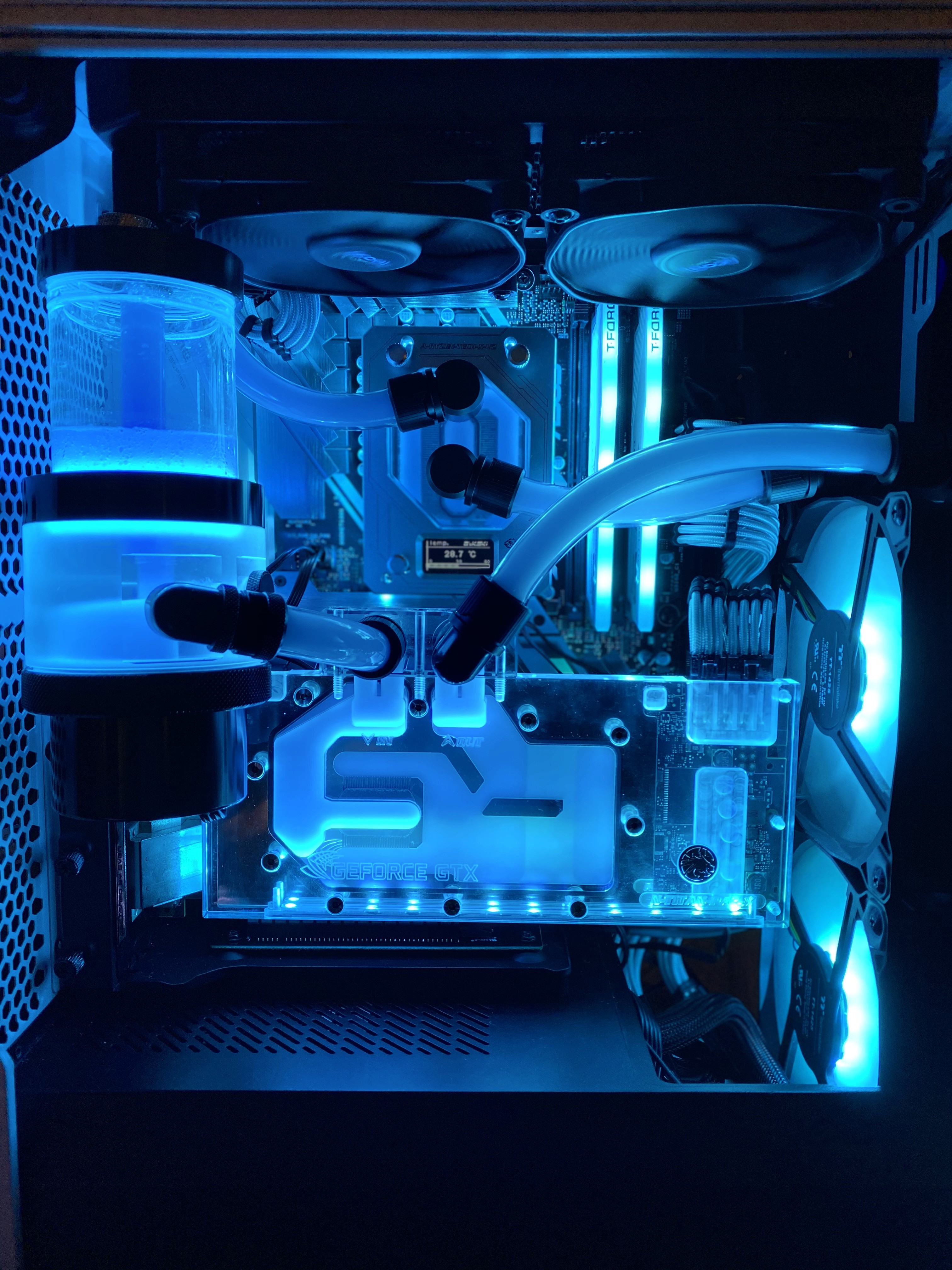From CPUs to GPUs: A Beginner's Guide to Computer Components
Apr 15, 2024

Welcome to the world of PC building! If you're new to this exciting hobby, you might feel overwhelmed by the array of components and technical jargon. Don't worry – we're here to demystify the key parts that make up a computer. Let's dive in and explore these technological marvels, their history, and the companies that bring them to life.
The Brains of the Operation: CPUs
At the heart of every computer beats the CPU, or Central Processing Unit. Often called the "brain" of the computer, it's responsible for executing the instructions that make your software run. The concept of a CPU dates back to the 1940s with the ENIAC computer, but it was Intel's 4004 in 1971 that brought microprocessors to the masses. Today, the CPU market is dominated by giants like Intel and AMD, with their Core and Ryzen series respectively. More recently, Apple has shaken things up with their custom M1 chips for Macs.
Memory Matters: RAM
But a brain needs memory, and that's where RAM (Random Access Memory) comes in. Think of RAM as your computer's short-term memory – it temporarily stores data for quick access by the CPU. The more RAM you have, the better your computer can juggle multiple tasks. The history of RAM goes back to 1947 with the Williams tube, but modern DRAM (Dynamic RAM) was invented by Robert Dennard in 1966. Today, you'll find RAM from companies like Corsair, known for high-performance modules, or G.Skill, popular among overclockers.
Visual Powerhouse: GPUs
Now, let's paint a picture. Imagine you're playing the latest blockbuster game, marveling at the realistic graphics. You can thank your GPU (Graphics Processing Unit) for that visual feast. While CPUs are generalists, GPUs are specialists, designed to render images and handle complex graphical calculations. NVIDIA revolutionized the industry in 1999 with the GeForce 256, the first true GPU. Today, NVIDIA and AMD battle for supremacy with their GeForce and Radeon series, while Intel has recently joined the fray with their Arc GPUs.
Beyond Gaming: GPUs in Crypto and AI
But GPUs aren't just for gamers anymore. These powerful components have found unexpected applications that have significantly impacted both their availability and the direction of technological development.
Cryptocurrency mining, particularly for coins like Ethereum, sparked a GPU buying frenzy in the mid-2010s. Miners discovered that the parallel processing power of GPUs made them ideal for the repetitive calculations required in crypto mining. This led to widespread shortages and price hikes, frustrating gamers and miners alike. The "crypto boom" forced manufacturers to rethink their production and distribution strategies, even leading to the creation of mining-specific GPUs.
More recently, GPUs have become the backbone of the generative AI revolution. The same parallel processing capabilities that make GPUs great for graphics and crypto mining also make them ideal for the complex matrix calculations required in machine learning and AI models. This has led to a surge in demand for high-end GPUs in data centers and research institutions. Companies like NVIDIA have capitalized on this trend, developing specialized GPU architectures optimized for AI workloads.
The influence of crypto mining and AI development on the GPU market can't be overstated. It's reshaped pricing, availability, and even the design philosophy behind these components. For PC builders and enthusiasts, this means staying informed about market trends is more crucial than ever when planning a build or upgrade.
Data's Home: Storage Devices
But where does all your data live when your computer is off? That's the job of storage devices. For decades, the Hard Disk Drive (HDD) reigned supreme. The first HDD, IBM's RAMAC 350, was introduced in 1956 and was the size of two refrigerators! Today's HDDs are much smaller and more capable, with companies like Western Digital and Seagate offering massive capacities. But HDDs aren't alone anymore – Solid State Drives (SSDs) have changed the game. First commercialized by SanDisk in 1991, SSDs have no moving parts, making them faster and more reliable. Samsung has become a leader in this technology, pushing the boundaries of speed and capacity.
The Great Connector: Motherboards
Connecting all these components is the unsung hero of every PC – the motherboard. It's the backbone of your system, determining which parts are compatible and how they communicate. The motherboard as we know it debuted in the IBM PC in 1981, and has evolved dramatically since then. Today, companies like ASUS, with their high-end ROG (Republic of Gamers) series, and MSI offer a dizzying array of options for every need and budget.
Power Play: PSUs
Of course, all these parts need power, and that's where the Power Supply Unit (PSU) comes in. It's not the most glamorous component, but a reliable PSU is crucial for system stability. The current ATX standard for PSUs was introduced by Intel in 1995 and remains widely used. When it comes to powering your rig, you might turn to Corsair for their reliable units, or perhaps Seasonic, known for their high-efficiency power supplies.
Keeping Cool: Cooling Systems
But all this power generates heat, and managing that heat is crucial for performance and longevity. Enter cooling systems. While early computers used passive cooling, the increasing power of processors necessitated active cooling solutions. The first CPU fan appeared in the early 1990s, and cooling technology has come a long way since. Today, you might opt for a beefy air cooler from Noctua, known for their distinctive (and sometimes controversial) beige and brown color scheme, or perhaps an all-in-one liquid cooler from Corsair for a sleeker look.
A Place to Call Home: PC Cases
Finally, all these components need a home, and that's where the case comes in. Gone are the days of beige boxes – modern cases are marvels of design and engineering. Companies like Fractal Design offer minimalist, functional enclosures, while others like NZXT push the envelope with sleek, futuristic designs. A good case isn't just about looks – it provides proper airflow to keep your components cool and offers convenient features for building and upgrading.
Bringing It All Together
As you embark on your PC building journey, remember that each of these components has its own rich history and ecosystem of manufacturers. The beauty of building a PC is in mixing and matching these parts to create a system that's uniquely yours. Whether you're aiming for raw power, whisper-quiet operation, or a visual showpiece, there's a world of options at your fingertips.
And remember, the PC building community is always here to help. Whether you're buying your first component or selling your old rig to fund an upgrade, ByteBuy is your go-to platform for all things PC hardware. Happy building, and welcome to the wonderful world of PC enthusiasts!
